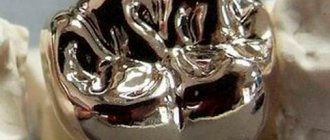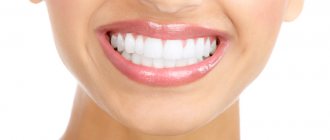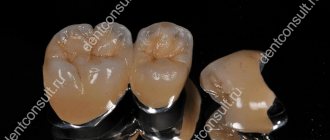07.05.2018
A large number of patients are faced with the need to have teeth removed. Injuries, untimely contact with a dentist, errors in previous dental treatment and much more are the main causes of tooth loss.
Unfortunately, patients often put off compensation for the resulting defect after tooth extraction. At the same time, without suspecting that this entails consequences that do not provide the possibility of further restoration of teeth through implantation.
To understand this slightly confusing formulation, we will first try to describe what processes occur in the dental system after tooth extraction.
How do “eights” erupt?
Wisdom teeth are the last teeth to erupt. Sometimes at 18–20 years old, but more often at a later age. In addition to the fact that these are the largest teeth, there are cases when they are located in the jaw bone not vertically, but at an angle. Therefore, problems most often arise with their eruption: the tooth does not grow upward, but to the side, pressing on the root of the nearest tooth, causing pain and inflammation. Often, to avoid such problems, wisdom teeth are removed without waiting for them to fully erupt.
Wisdom teeth often cause problems when they erupt
But if the tooth grows more or less without problems, the person does not see a dentist; there is no indication for tooth extraction. And then it turns out that due to the growth of molar No. 3, the front teeth have moved.
“Eights” are large teeth, and if there is not enough space in the dentition, they move neighboring teeth, and even the front ones.
Crowded teeth
Is it possible to remove a tooth and return everything as it was?
If you remove a tooth, nothing will change. Orthodontist patients know that after treatment a consolidation stage is needed, otherwise the roots of the teeth will begin to move to their old familiar place. It takes at least two years for the teeth to adjust and strengthen in their new position, and to do this they are held in place with the help of retainers and aligners.
During orthodontic treatment, the pressure from braces or aligners is much greater than that exerted by the growing wisdom tooth. Therefore, with an orthodontic system, teeth are moved within a few months, and the first results are visible within a few weeks.
Aligners correct the position of teeth in a few months
A growing molar erupts very slowly, over 2–3 years, and puts pressure on neighboring teeth, causing them to move. The process occurs almost imperceptibly, the teeth shift by fractions of a millimeter per month. During this time, they get used to the new (wrong) position. The ligamentous apparatus that supports the teeth is rebuilt to a new position, and the bone tissue around the roots is strengthened. And even if wisdom teeth are removed, it will not be orthodontically beneficial. Neither from a health point of view, nor from an aesthetic point of view.
How to stop the drift?
To prevent destruction, after the operation, restoration of the masticatory organs should be undertaken. To do this, the patient must contact an orthodontist. Braces are often required to correct an overbite. It happens that the hole becomes inflamed, causing the wound area to become infected and may fester. In such situations, cleaning and disinfection are performed. Therapeutic methods also include:
- Installation of removable corrective devices. They include a plastic plate. It is held in the mouth by hooks and wire loops. To straighten and return the units to the correct position, springs and arms are used. To further expand the jaw, an expansion screw is installed on the plate.
- Orthodontic devices that are not removable are represented by systems for correcting jaw closure. This effective technology allows you to correct the chewing organs of adults. The braces are fixed with special glue. A strong bracket is pulled to make the connection. It creates the right amount of force so that the units move in the right direction.
- In difficult situations, radical technologies are used. Treatment may involve face bows, which significantly change the configuration of the skull.
Nowadays, aligners and mouth guards are also used. They are suitable for patient patients. The correction period takes from 12 months to 2.5 years. The aligners are changed every 15 days. The advantage of aligners is the transparency of the material. They can be removed for hygiene purposes or for eating.
What to do?
Treatment with braces or aligners will help correct the position of your teeth. However, it is not necessary to remove grown wisdom teeth. Whether to save them or not is decided individually in each case and only after examination. If it is possible to expand a row of teeth so that there is enough space for all teeth, then there may be no indication for removal. It is always better to preserve healthy teeth, this also applies to third molars.
If the teeth were initially straight and the erupting wisdom tooth has distorted them, a slight disturbance in the position of the teeth usually occurs. Regardless of the patient’s age, it can be corrected in a few months.
Teeth began to separate
The front lower teeth and upper teeth gradually fan out between
itself and gaps appear between the teeth? Previously, they stood in beautiful, even rows, and then suddenly, for no reason at all, they began to move. Why?
The fan-shaped divergence of the front group of teeth, or rather their position is called protrusion! Teeth pushed forward are an aesthetic flaw that changes the appearance, so you have to make a lot of effort to close your lips! Exposed tooth roots and mobility cause patients considerable discomfort when chewing and biting food. This is a characteristic sign of moderate to severe periodontitis.
Causes of teeth discrepancy.
The supporting apparatus of the teeth that holds the teeth in the bone socket is called the periodontium. The main function of the periodontium is to firmly hold the tooth with the help of an elastic ligament. The elastic ligament firmly covers the tooth and prevents
penetration of infection between the tooth root and the bone socket. The tooth is suspended in the socket and can make small movements. That is, the healthiest and most stable tooth has insignificant mobility. If it weren't for it, the teeth wouldn't last as long. Because of this mobility, the periodontium has a trophic function - it nourishes the tooth during chewing. As periodontitis progresses, the circular ligament of the tooth is damaged and over time it completely disappears! And this is due to periodontitis, which lasts for a long time in a latent form and has a chronic course. With moderate periodontitis, bone tissue is already involved in the inflammatory process. Constant destruction of bone tissue leads to exposure of the tooth root. A tooth deprived of stable support can no longer withstand chewing loads and this leads to an increase in tooth mobility. Once started, this process continues to develop uncontrollably and leads to the tilting of the teeth, their “fan” arrangement. A factor of traumatic occlusion arises, in other words, during normal chewing, the antagonists (the group of teeth opposite to it) are knocked out by their own teeth. In the absence of proper treatment for periodontitis, such a group of teeth loses their stability and eventually must be removed.
Among the main causes of a local nature in the oral cavity are:
- Incorrect bite.
- Pathological abrasion
and overload of the supporting apparatus of the tooth. - Poor oral hygiene.
- Untreated gingivitis
. - Errors in prosthetics with crowns and bridges, veneers.
- Incorrectly placed fillings when filling teeth.
What to do if your teeth start to come apart?
In such a situation, an urgent consultation with a periodontist is necessary!
Only a person can identify the cause, eliminate it and prescribe adequate treatment.
periodontist-surgeon.
Unfortunately, today, the level of training of dentists in gum diseases is extremely low. And the patient is unaware of his diagnosis for a very long time, and when the situation in the oral cavity worsens sharply, the diagnosis of periodontitis is made. The advanced stage of periodontitis not only requires considerable effort from the periodontist, but also treatment for the patient is expensive and requires large financial costs. As a rule, in such situations a full range of periodontal procedures is required, using laser technology
,
open curettage , flap operations
and after three months
the Vector procedure
. Unfortunately, as a
splinting
, this is not a treatment for periodontitis, it is simply a preparatory stage in the treatment of moderate and severe periodontitis gravity.
It is worth noting that splinting, even highly mobile teeth, allows you to connect them into a fixed block for a long time, evenly distribute the chewing load and makes it possible to carry out high-quality surgical procedures in the treatment of periodontitis. Surgical treatment
remains the leading treatment for moderate and severe periodontitis!
Three golden rules that will save your teeth.
Necessary:
- Professional examination every six months by a periodontist.
- Consultation with a periodontist before installing crowns, bridges, veneers and
orthodontic treatment. - After prosthetics and fillings.
Here are three simple rules that do not require any financial costs from the patient, but will allow you to identify periodontitis at the initial stage and monitor the work of the orthopedic dentist, therapist and orthodontist.
IMPORTANT:
It is always easier to prevent and eliminate the causes than to deal with their consequences.
With timely and competent treatment of periodontitis, you can preserve your teeth and the beauty of your smile for a long time. Do not forget to visit a periodontist once every six months for the purpose of prevention and periodontitis will not overtake you!
Types of complications after tooth extraction
Problems that may arise after operations are usually divided into two groups. The first group includes general complications:
- a sharp drop in blood pressure (collapse);
- reflex changes in blood vessels due to insufficient level of pain relief;
- change in consciousness (fainting) due to fear;
- shock, including pain due to inappropriate anesthesia.
The incidence of general complications is low. Usually they are limited to short-term fainting, from which the patient is brought out with the help of ammonia. If the anesthesia is insufficient, the patient experiences pain, which he reports to the doctor - the issue of increasing the concentration of the substance used or choosing a different method of pain relief is decided.
A local complication after tooth extraction is considered to be a pathological condition localized at the intervention site. It does not affect the body as a whole, but causes serious inconvenience to the patient.
Local complications after tooth extraction include:
- bleeding at the site of the extracted tooth;
- paresthesia;
- fracture and dislocation of the jaw;
- leaving particles of the extracted tooth in the gums;
- alveolitis;
- perforation of the maxillary sinus;
- removal of a baby tooth along with the germ of a permanent one;
- root wedging into soft tissue;
- osteomyelitis and other complications of a purulent nature;
- bite pathology;
- traumatic removal of the maxillary tubercle;
- injury to nearby teeth (luxation or fracture);
- root or crown fracture;
- injuries to the gums, tongue and soft tissues;
- aspiration of a tooth or its root.
Each type of complication has its own treatment method. It is important for patients to seek medical help as soon as symptoms appear to help avoid the development of serious pathologies.











